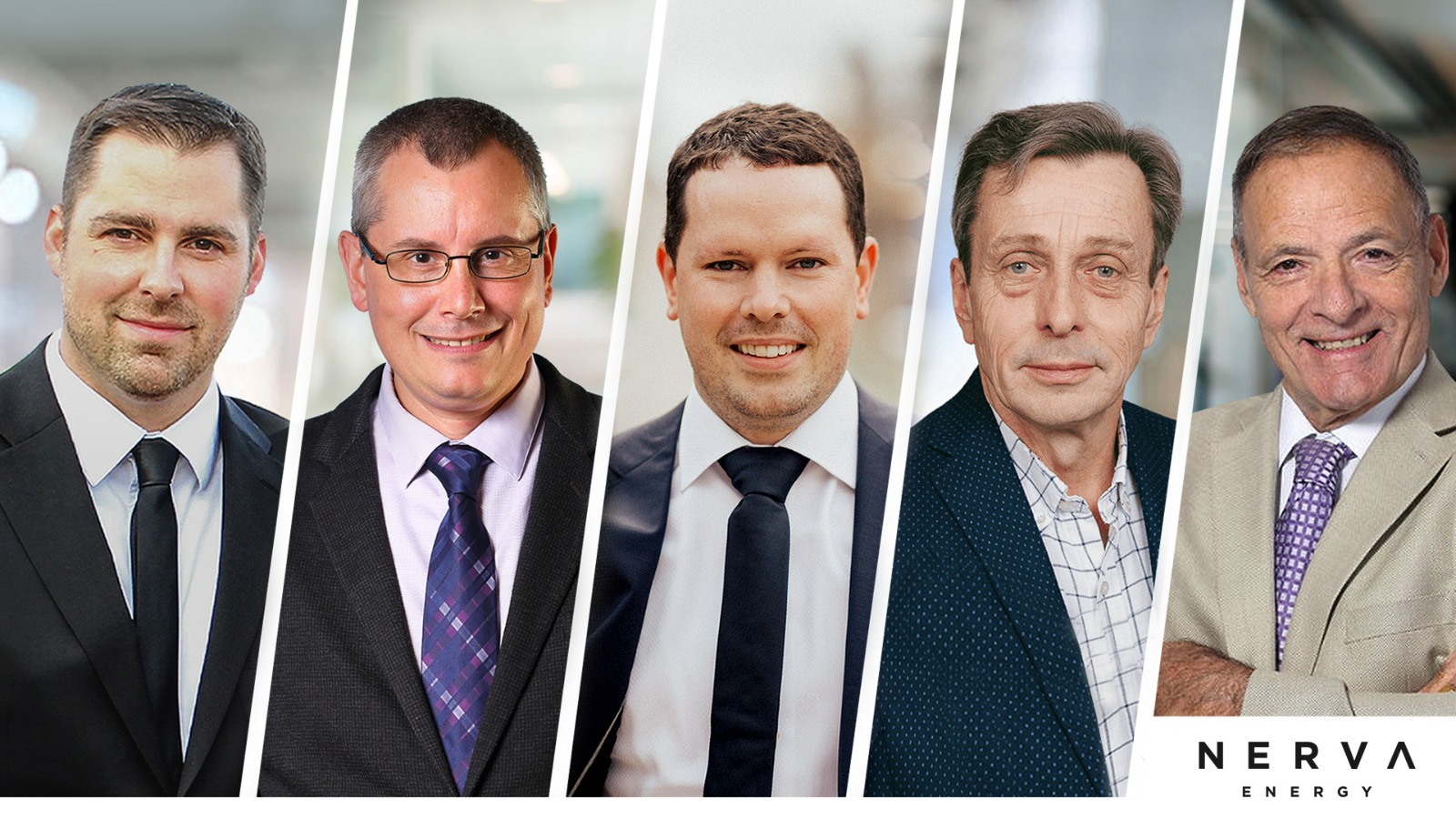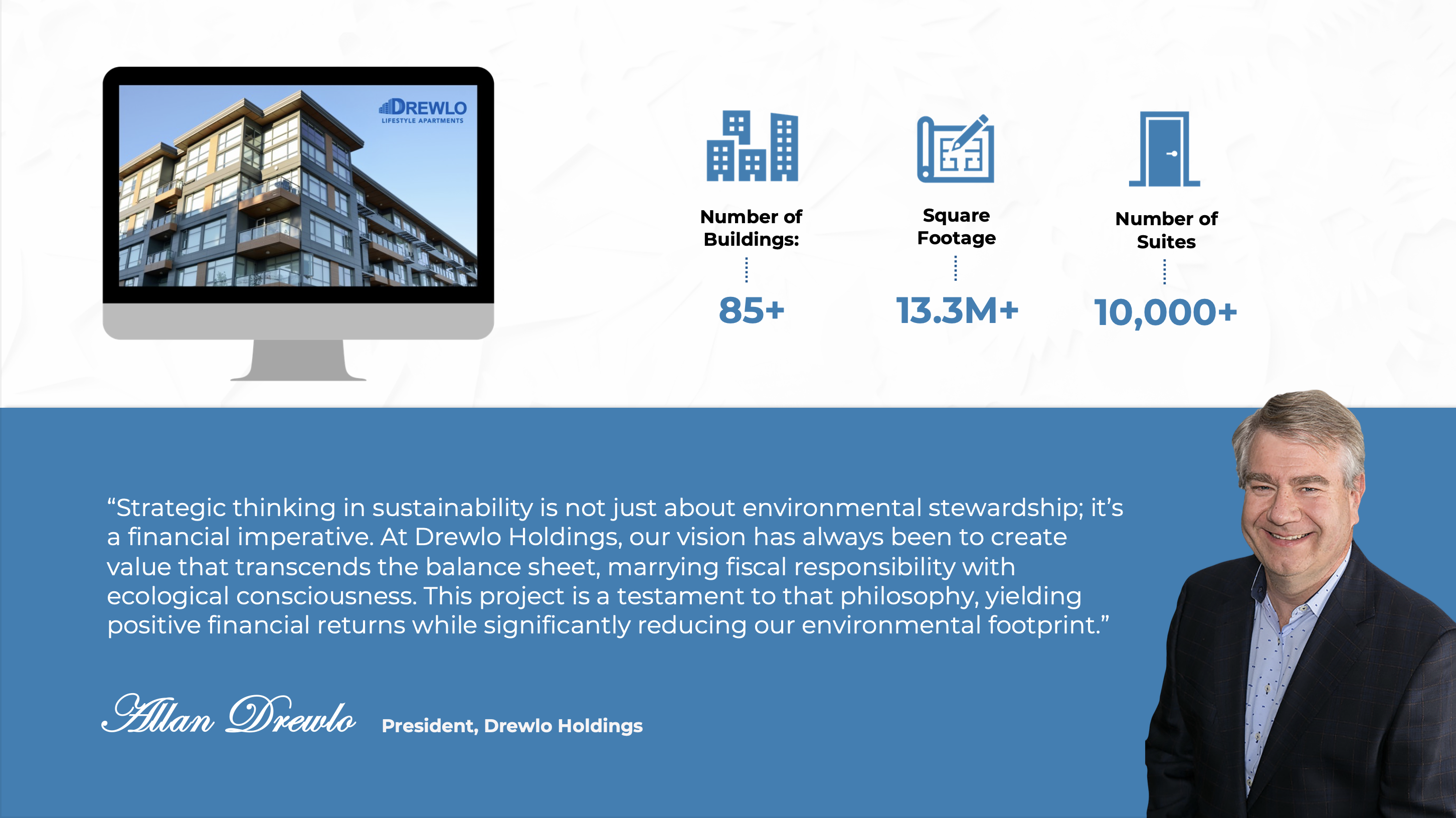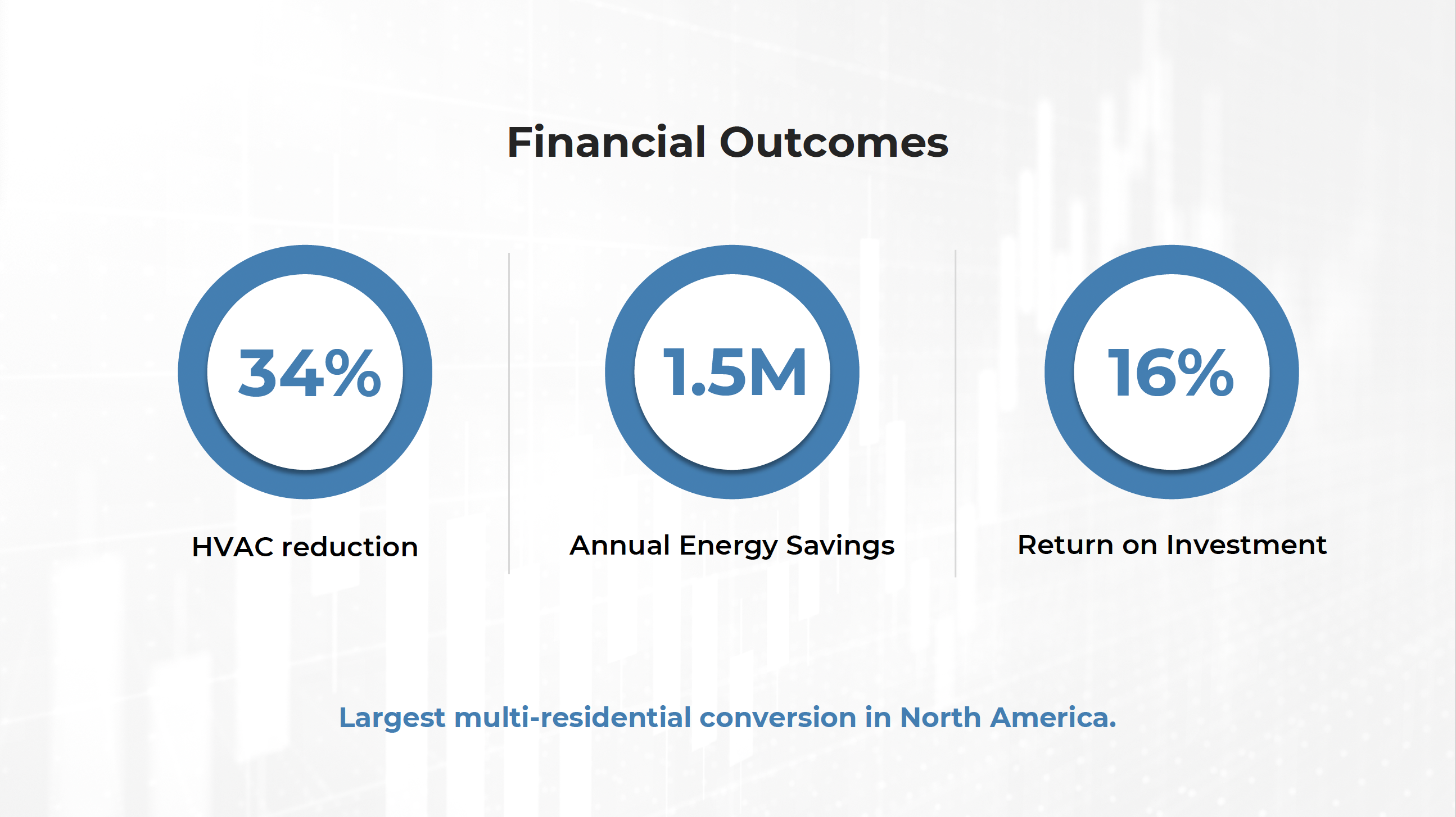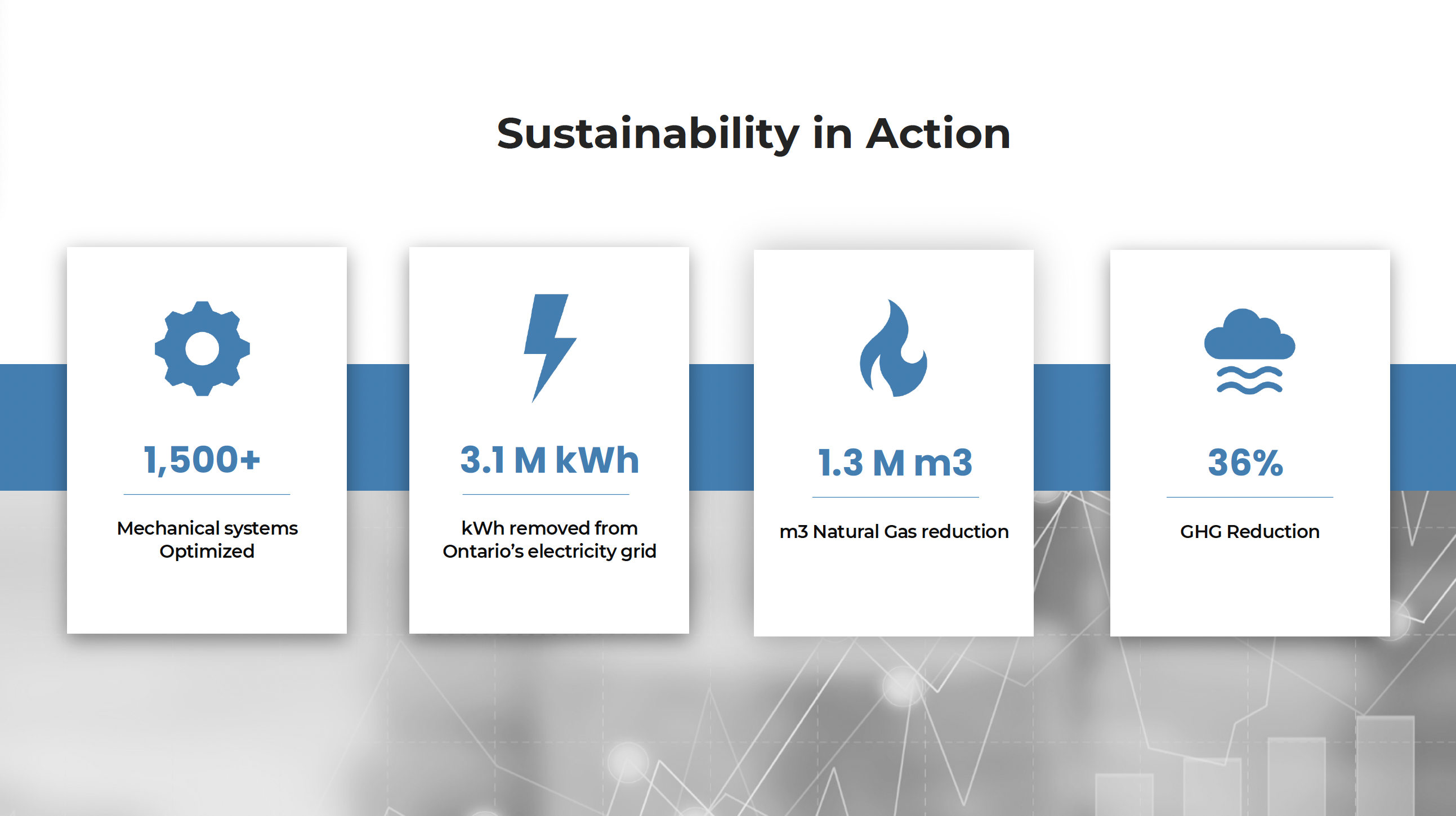In partnership with Drewlo Holdings NERVA Energy achieved the largest multi-residential smart building conversion in North America, building a greener future with buildings
Projects Sponsor
NERVA Energy’s primary objective was driven by the client’s business goals of overcoming the financial pressure of escalating energy costs, whilst significantly reducing their carbon footprint. The client identified aggressive financial and environmental outcomes, which signified a radical shift from traditional energy conservation practices. It was clear to NERVA that the project they were signing onto was hardly business as usual. The breadth and scope of the undertaking would instead mark a significant evolution from standard real estate operations to a new era of sustainable living spaces.

A project of this scope and ambition would require NERVA to meticulously address the unique challenges of a variety of buildings. Not only do the properties all differ in age, design, and mechanical infrastructures— the varying needs of over 1,000 tenants per building would need to be taken into account to make the project a success. As well, the navigation of an asset class traditionally constrained by stringent regulations and rent control meant they would need to aptly balance financial stakeholder needs with the delivery of substantial energy savings and GHG emission reductions, and the NERVA team proved up for the challenge. Ultimately this initiative would set a precedent as North America’s most expansive smart building conversion for multi-residential properties, but getting there was a journey.
In this vast project, assessing each unique building’s envelope performance, mechanical infrastructure, and operational practices was challenging. The team discovered that effective management of HVAC systems, seen as part of an entire mechanical “ecosystem,” is crucial for peak energy performance. Utilizing real-time performance data is essential for making informed operational and optimization decisions.
The project encountered mechanical systems that were often oversized and poorly maintained, leading to unique operational hurdles for each building. Despite these challenges, the NERVA team was able to establish clear KPIs from the start, driven by the client’s financial and environmental objectives. Crucially, this approach ensured that their energy conservation measures aligned with their client’s goals.
The need for real-time energy performance monitoring was a significant technical hurdle. However, by integrating OpenAPI technologies, the team developed a central energy performance dashboard, enabling comprehensive real-time monitoring across individual systems, buildings, and the entire portfolio. This tool is pivotal for maintenance, repair, and equipment life cycle forecasting.

In the early stages of the project, an energy performance baseline was created for each individual building through the assessment of 3-year utility data primarily gauging historic performance in electricity consumption, natural gas consumption, and GHG emissions. This pre-optimization energy performance analysis was conducted by Certified Energy Managers who worked diligently to isolate the consumption and performance of mechanical systems including boilers, chillers and cooling towers, domestic hot water and make-up air units, including all related fans, pumps, VFDs, etc. Data were extrapolated not only from monthly utility bills, but also existing BAS systems where available. Additionally, the analysis was enhanced through “weather normalization” and quantification of underlying building conditions such as envelope R-values, age and state of windows, window-to-wall ratios, etc.

Establishing this baseline gave the NERVA team something against which post-optimization results could be compared during the measurement and verification process. In order to ensure the accuracy of post-optimization consumption and performance, submeters were introduced to all major mechanical and related systems. Because each property underwent a thorough energy and equipment audit, pinpointing inefficiencies and paving the way for targeted improvements, the team had comprehensive insights on equipment sizing and operational effectiveness, which set the stage for informed optimization.
All this meant that the project not only met but exceeded the client’s ambitious KPIs. Ultimately, more than 1,500 mechanical systems were optimized, resulting in a total natural gas demand reduction of 1.3 Million cubic meters (38%) and a decrease in grid electricity demand of 3.1 Million kWh (33%). All this adds up to a portfolio-wide greenhouse gas reduction of 36%, amounting to $1.5 Million in annual energy savings and signalling a 16% ROI for the project.


The project’s breadth, depth, and impact are unparalleled. NERVA’s integrated delivery model—merging energy and mechanical engineering, system implementation, measurement & verification, and continuous commissioning—played a critical role in its success. This cohesive approach allowed Drewlo Holdings to articulate their requirements effectively, while their multidisciplinary team crafted and executed bespoke solutions. NERVA Energy’s mechanical and engineering expertise allowed the team to implement solutions that are practical, effective, and proven, streamlining the client’s path to enhanced energy efficiency and sustainability without the usual chaos and cost of managing disparate subject matter experts.
In a world where sustainable practices are no longer optional but essential, this project stands as a beacon of innovation and leadership. It is not just about what has been accomplished; it’s about setting a new standard for what is possible. This is an initiative that underscores the growing importance of energy efficiency as a transformative force in the industry and serves as a scalable model for similar projects, influencing strategies for energy and carbon footprint reduction.
NERVA Energy is building a greener future with buildings.













